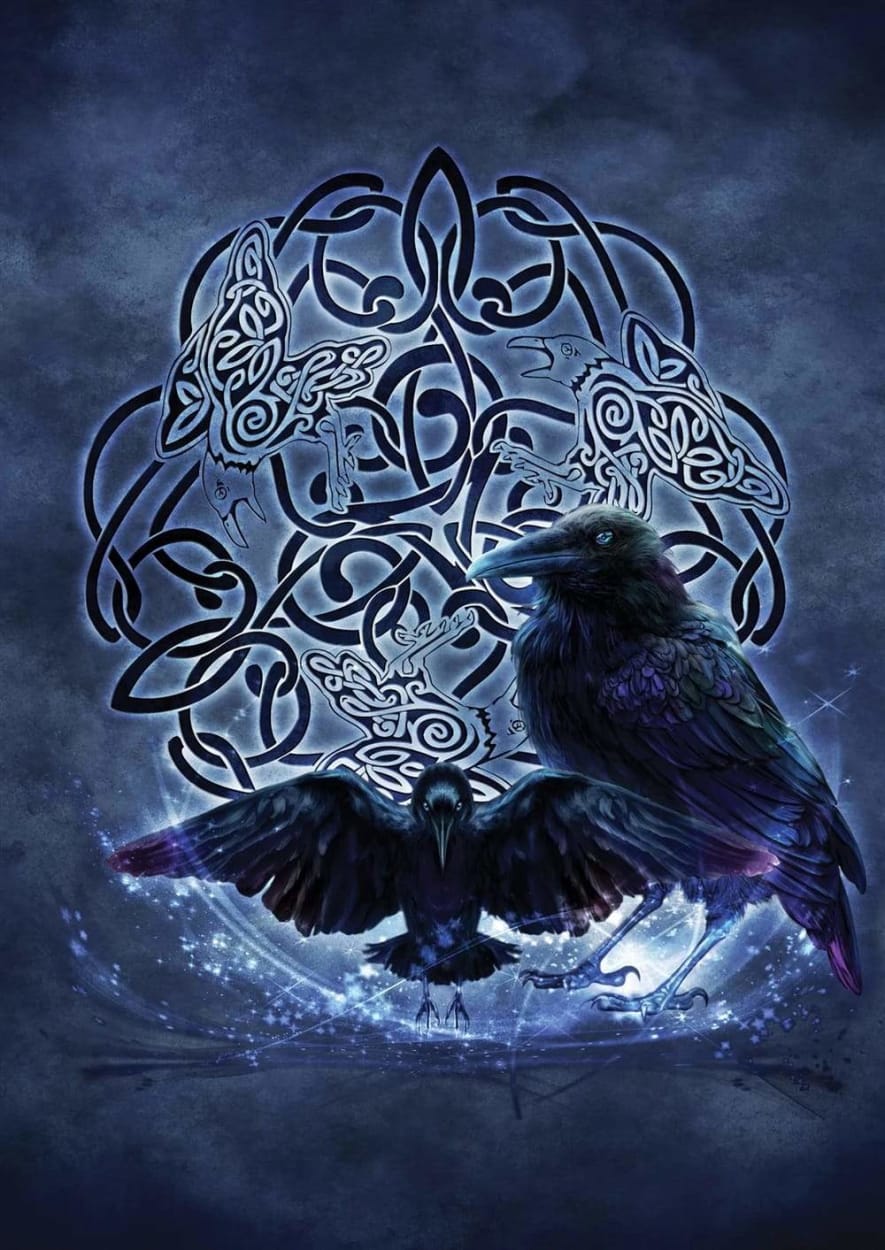Your Cart is Empty
Enjoy Up to 50% Off and Free Shipping! 🌎✈️
Huginn and Muninn are a pair of ravens that served Odin the Allfather as his messengers. In several artworks, the two ravens were depicted right next to Odin or sitting on his shoulders.
Huginn and Muninn flew around the world during the day and returned to Odin in the evening to tell him all they saw.
It was believed that, thanks to the abilities given to them by Odin, Huginn and Muninn were keen observers and could travel all of Midgard (the world) in a day, speak and understand the language of humans.
That is also the reason why some experts suggest that Huginn and Muninn might actually be projections of Odin’s consciousness.
The fact that the words ‘Huginn’ and ‘Muninn’ literally mean ‘thought’ and ‘mind’, respectively, strengthens this theory.
In that sense, Huginn and Muninn are considered as symbols of Odin and his powers.

Ravens were revered in the Norse culture. Many Viking earls and kings, including Ragnar Lothbrok, used ravens on their banners.
Vikings also used ravens to find land when they set sail out to the unknown waters. They used to keep ravens in cages and let them out with regular intervals to find land.
Once let out, the ravens would scout the area around the ship and fly towards land if they found it. If not, they would fly right back to the ship.
That is, in fact how, one of the most famous Vikings, Floki (Hrafna-Flóki Vilgerðarson) found Iceland according to the story. The word ‘hrafna’ actually means ‘raven’.

Some scholars interpret Huginn and Muninn as projections of Odin himself, rather than common ravens whom he has blessed with special powers.
In Norse culture, it was common for shamans to enter a trance-like state, during which they sent their consciousness to probe the world and bring back information.
Odin’s ravens’ names (Huginn meaning “thought” and Muninn meaning “desire or mind”) support the idea that they are projections of his consciousness.
It’s no great stretch of the imagination to believe that Odin, the leader of the gods, could project his “thought” and his “mind” in the same way that a shaman could and that the ravens are simply symbols of his omnipotence.
Other scholars believe that Huginn and Muninn are Odin’s fylgjur. In Norse culture, spirit animals, called fylgjur, are commonly seen in the company of great men and women.
These animals are manifestations of the person’s character. Someone with a fox as a fylgja is sly and cunning, while someone with an ox as a flygja is strong but tame. Ravens embody wisdom and guidance in Norse culture, so a god with two ravens as his flygjur would be a wise guide—just like Odin.
Fylgjur are often tied into a person’s fate as well; they tend to show up just before a climactic moment in the person’s life, and they are often omens of death.
Huginn and Muninn frequently appear in depictions of Ragnarök, the great, apocalyptic battle where Odin is doomed to die. The ravens warn him of the event and remain on his shoulders during the battle.
Finally, some scholars believe that Huginn and Muninn are Odin’s hamingja, a physical embodiment of his luck. In Norse culture, the spirit is made up of many, separable parts that can be sent on different errands.
The hamingja is one of those parts, and because it is not one of the most essential parts of the spirit, it is often deployed on small missions.

